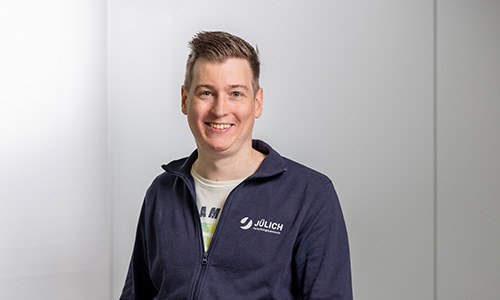From weather forecasting to climate simulation
Sabine Grießbach wants to use JUPITER to create detailed climate forecasts.

The applications on which Mathis Bode (JSC) works are much more commonplace. He investigates the flow phenomena of liquids and gases. “This includes the aerodynamics of cars and aeroplanes, for example, as well as the processes inside turbines and engines.”
Flow simulations also play an important role in many aspects of the energy transition: How can battery packs be cooled efficiently? How can air conditioning systems be designed to keep a building at a constant temperature in an economical way? What is the optimum design for the rotor blades of wind turbines to ensure that they harvest as much energy from the air as possible?
Mathis Bode also sees potential for using hydrogen as a future energy source: “In a hydrogen economy, we will need hydrogen power plants in the near future. To develop these plants, it will be necessary to simulate the processes inside them, for example the turbines. JUPITER allows us for the first time to depict real, industrially relevant conditions on a supercomputer. It also delivers the simulation results in a much shorter time.”
Flow phenomena are described by the Navier–Stokes equations. Solving these equations, however, is anything but routine. The differential equations are usually so complex that even supercomputers can only solve them approximately. Bode uses the nekRS software package for this purpose. In addition to pure fluid mechanics, the package can be used to take other processes into account, such as chemical processes that occur during combustion in an engine.
“To do this, the program must consider the extreme conditions in the engine that influence the flow, such as high temperatures, high pressures, and strong turbulence,” explains the flow expert. nekRS can also simulate all relevant variables of flow phenomena simultaneously without cutting off any important information, for example the geometry-driven flow or the smallest turbulent vortices. “Taking all this data into account in the flow is a real challenge for a simulation and results in enormous computing and memory requirements.”
JUPITER is changing all that. “nekRS has already been optimized to work on graphics cards such as the ones used in JUPITER’s Booster module. The sheer number of processors results in an enormous time saving,” says Bode. “What used to take two weeks will only take a day on JUPITER.”
JUPITER is an all-rounder that promises huge advances in a wide range of research fields. Its modular hardware architecture allows it to cover a broad spectrum of applications. It is not yet possible to say exactly what insights await the Jülich experts. The exascale era in Europe has only just begun.

Text: Arndt Reuning